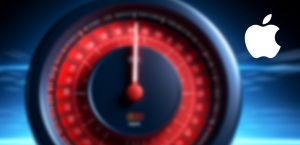 How to recognize and deal with a hacked WiFi
How to recognize and deal with a hacked WiFi
The most important advantage of switching from a cable-based network connection to WiFi is the fact that you can use the Internet from anywhere near your router, without dealing with scattered cables around your home. However, the risk of connecting to a WiFi is that you could be dealing with hackers trying to steal your bandwidth, or even worse - your data, thus slowing down the speed of your Internet connection or endangering your privacy. They can easily achieve that by simply sitting near your house. There are many potential unwanted outcomes: large Internet bills, losing important data from your Windows PC, etc.
Setting a stronger WiFi password just won't suffice. In this guide, I will show you how to protect your network. You will need to complete a series of steps which include the following: make a couple of changes in the router's settings, opt for a different wireless network name, filter MAC addresses, etc. The good aspect is that you won't need to install a software to block WiFi hackers. Simply complete the following steps and you will no longer have to worry about a hacked WiFi.
Tutorial assets
You will need to download the following software to follow along with this tutorial.
Opt for a secure default password for the router
In order to have a secure WiFi connection, you require safe WiFi login credentials. Unauthorized users don't need to use advanced WiFi hacking tools in order to connect to your network. There are countless websites that offer a list of the default router passwords. So, having a strong router password will definitely help you prevent unauthorized users from connecting to your network and slowing down your Internet access speed. Here's what you need to do:
Step 1
Access your router's homepage and log in to your account. You can access this page usually by typing "192.168.1.1" in your default web browser.
Entering Router Account Info
Step 2
Choose a new, secure password for your router. Include as many types of characters as possible, but make sure the password is memorable so that you won't forget it later (a good idea would be to write it on a piece of paper or a post-it which you can stick to your router device).
Encrypt wireless signal
Another thing you need to do in order to prevent unauthorized users from using your Internet connection is to encrypt your wireless signal. WEP is among the least secure methods, but it's compatible with dozens of hardware devices. WPA2 is stronger and is supported by almost any network device that's been manufactured after 2006. Here's what you need to do:
Step 1
Head to the router’s configuration page again. Go to the Wireless Security Settings panel.
Step 2
Choose the encryption options (WPA2, WEP, etc.) that best fit your hardware device (old or new).
Change the SSID of your network
Altering the SSID (Wireless Network Name) of your wireless router won't make your connection much safer. However, it will definitely help users identify which network they're connecting to.
Step 1
From the same webpage you accessed while completing the aforementioned steps, go to Basic Wireless Settings panel.
Step 2
Choose a different SSID. Avoid using first names, addresses or other type of personal details.
Basic Wireless Router Settings
Filter MAC addresses
Every wireless device that's being connected to your network has its own MAC address. One way to see if someone is using your Internet connection is by filtering the MAC addresses and checking which of the listed MAC addresses don't correspond to your personal wireless devices (laptop, smartphone, tablet, etc.).
Step 1
Create a list of the MAC addresses of your hardware devices which are being connected to your wireless network.
Step 2
Head to the router’s administrative settings page and add your MAC addresses. Any of the devices that are attempting to connect to your network but don't have the right MAC address will be denied access.
Conclusion
According to many websites that offer you information about enhancing Internet security, the best results come from combining the WPA encryption with the MAC address filtering. So, follow the aforementioned steps and no unauthorized user will connect to your wireless network and slow down the speed of your Internet access.
As a Mac user, you will need to complete similar steps. Afterwards, find out if the new network settings helped you block unauthorized users from connecting to your wireless network. In a previous article we showed you how to check your WiFi connection speed in Mac OS X. Read that guide, follow the instructions, and then check if it worked for you as well.
Alternative downloads
-
 inSSIDer
free
windows
Visualize your wireless environment so you can adjust your router settings for optimal Wi-Fi performance.
Download
inSSIDer
free
windows
Visualize your wireless environment so you can adjust your router settings for optimal Wi-Fi performance.
Download
-
 inSSIDer Office
$149
windows
inSSIDer Essential bundles inSSIDer Office with Wi-Spy DBx to shed light on the most common WiFi...
Download
inSSIDer Office
$149
windows
inSSIDer Essential bundles inSSIDer Office with Wi-Spy DBx to shed light on the most common WiFi...
Download





Comments
Subscribe to comments